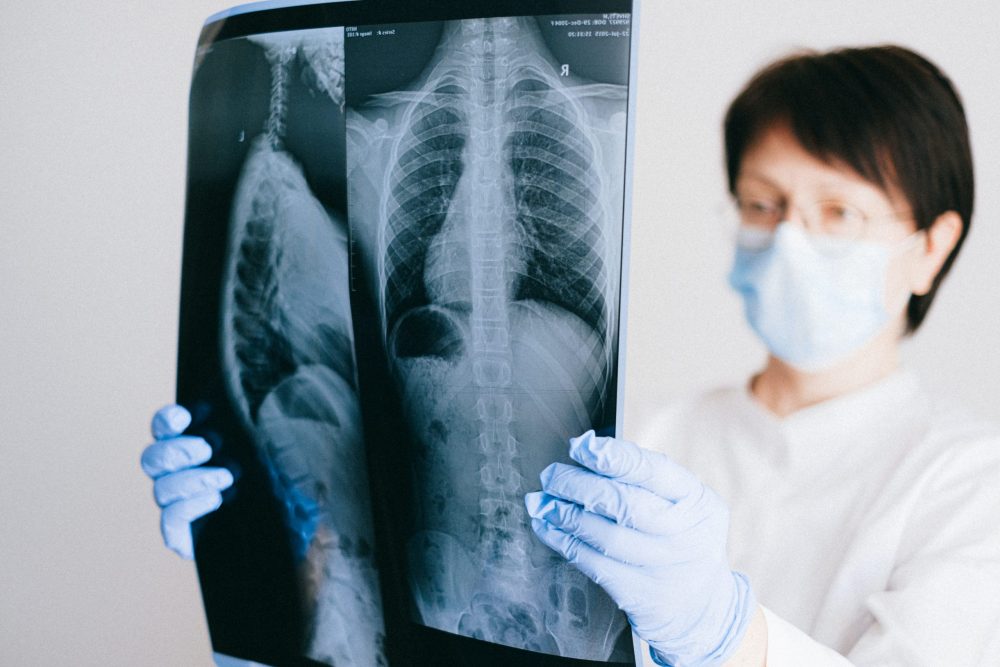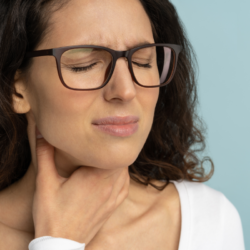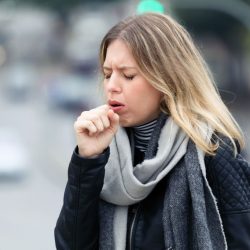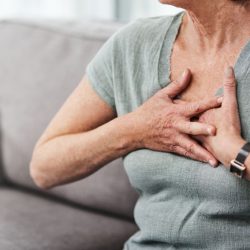Acute pneumopathies are infections of the lung parenchyma , caused by viruses, related microorganisms or bacteria. We will eliminate in this article the question of pulmonary suppuration, lung abscess type, in which homeopathy can only play an adjuvant role and acute pneumopathies in infants in cases where they lead to blood problems requiring resuscitation. The clinical picture is made of fever , general signs and functional respiratory signs with cough .
During the onset of acute pneumonia
We find practically the clinical forms that constitute the descriptions made about the drugs of acute bronchitis : Aconitum and Belladonna , to which one can add Oscillococcinum (a dose as soon as possible to repeat 6 or 12 hours later) because of the effectiveness of this drug in viral diseases.
In period of state of acute pneumopathies
It is indeed necessary to distinguish the forms without or with expectoration and certain particular localizations.
Form without sputum:
-
Bryonia :
There is a dryness of the mucous membranes , sometimes already a serous exudation (pleura) which corresponds to the second stage of the inflammation, with fever, sweating which relieves, painful side stitch aggravated by movement or breathing, improvement by pressure, l immobility , or lying on the painful side. The cough is dry , aggravated especially when entering a warm room.
Dosage : Take Bryonia 7 or 9 CH, 5 granules 2 to 4 times a day.
This medication is indicated when the congestive focus is clear. There is therefore a high fever with burning sensation of the palms of the hands, inextinguishable thirst for cold water, variable dyspnoea , dry and painful cough . Worse lying on left side. The sputum may be streaked with blood.
Dosage : Take Phosphorus 9 CH, one dose morning and evening. In viral pulmonary infiltrates , with more discreet symptomatology, most often of purely radiological diagnosis. Take in 9 or 15 CH, every day or every 2 days, until the radiological images disappear. The similarity here is anatomo-pathological (Phosphorus is contraindicated in cases of progressive pulmonary tuberculosis).
This drug will be taken on the notion of bronchial and pulmonary inflammation, with the presence in the patient of marked general signs , characteristic of the pathogenesis of Arsenicum album:
-
- Severe infectious state , with weakness, agitation, chilliness
- Burning pains improved by heat
- Thirst for small, frequently repeated amounts of cold water
- Nocturnal worsening between 1 a.m. and 3 a.m.
Pneumopathy may be complicated by dyspnea or asthma .
Dosage : Depending on the similarity, take 7, 9 or 15 CH, 1 to 2 times a day, depending on the intensity of the symptoms.
Forms with expectoration:
-
IPECA :
Spasmodic cough with suffocation , accompanied by nausea and vomiting: dyspneic and emetic cough . Great accumulation of mucus in the bronchi, with scattered fine rales. The tongue remains clear or lightly charged. Hypersalivation . Absence of thirst .
Dosage : Take in 7 or 9 CH, 5 granules 2 to 4 times a day depending on the intensity of the symptoms.
Fine or moist rales, indicating the presence in the bronchi and lungs of a large quantity of thick mucus, which makes expectoration difficult . Dyspnea is important, noisy , with beating of the wings of the nose. The skin is pale, cold, with sometimes cyanosis of the lips and dark circles around the eyes . The patient is dejected, drowsy .
Dosage : As for Hepa sulfur, low dilutions promote expectoration, high dilutions dry up secretions. Take 5 granules in 5 or 7 CH twice a day, at the beginning to facilitate expectoration, then take in 15 CH to dry it up.
With this medicine, the cough is dry at first, then there is a suppurative tendency with abundant purulent expectoration and moist rales.
Dosage : The action of Hepar sulfur vis-à-vis suppuration is variable with the height of the dilution used:
→ Low dilutions (4-5 CH) promote suppuration and have a centrifugal role (as with low diluted Sulfur, possible aggravation of suppuration in a closed cavity: otitis for example). In 5 CH, Hepar sulfur promotes expectoration at the beginning. Take 5 pellets once a day.
→ High dilutions (15-30 CH) dry up suppuration . Hepar sulfur 15 CH dries up sputum. Take 5 pellets once or twice a day.
Dosage : To prevent secondary infections, almost systematically, here too, we can take Pyrogenium 7 or 9 CH, 5 granules once a day.
According to location:
Depending on the location of the lung damage, certain drugs are more specifically indicated according to their preferential pathogenetic tropism for a particular lung region.
-
Avian :
It is the tuberculin of birds, obtained from cultures of Mycobacterium tuberculosis of avian origin, without addition of antiseptic. This medicine is indicated in case of localized damage to the pulmonary apexes , especially in children.
Dosage : Take 1 single dose in 15 CH, not to be repeated. Give the dose at the thermal maximum. This drug is also useful in case of recurrent pneumopathies and in case of iterative otitis.
In period of resolution of acute pneumopathies
As in acute bronchitis and for the same pathophysiological reasons, we can systematically take at this clinical stage, and for about eight days:
- Pulsatilla 9 or 15 CH, 5 pellets on waking and around 5 p.m. (in children prone to ear infections, prefer 15 CH)
- Sulfur iodatum or 15 CH, 5 granules at bedtime.





